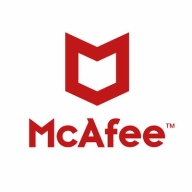

McAfee ePolicy Orchestrator and Microsoft Sentinel are security management and threat response products. Microsoft Sentinel often has the upper hand due to its cloud-native features, which are highly valued despite its higher cost.
Features: McAfee ePolicy Orchestrator includes centralized security management, device control, and compliance reporting. Microsoft Sentinel offers integration with Azure services, AI-driven threat detection, and scalability.
Room for Improvement: McAfee could enhance its scalability and reporting capabilities, optimize the update distribution process, and improve cloud integration. Microsoft Sentinel could benefit from reducing false positives, expanding non-Microsoft product integrations, and refining the threat intelligence capabilities.
Ease of Deployment and Customer Service: McAfee ePolicy Orchestrator requires significant on-premises setup yet provides stable support. Microsoft Sentinel, being cloud-based, integrates quickly and offers responsive customer service, especially beneficial for enterprises using Azure.
Pricing and ROI: McAfee ePolicy Orchestrator offers a lower initial cost, with ROI tied to integration in existing IT infrastructures. Microsoft Sentinel's higher upfront cost is counterbalanced by its cloud functionality and integration potential, delivering strong ROI through advanced threat intelligence.
| Product | Market Share (%) |
|---|---|
| Microsoft Sentinel | 15.9% |
| McAfee ePolicy Orchestrator | 0.7% |
| Other | 83.4% |


| Company Size | Count |
|---|---|
| Small Business | 13 |
| Midsize Enterprise | 11 |
| Large Enterprise | 19 |
| Company Size | Count |
|---|---|
| Small Business | 37 |
| Midsize Enterprise | 20 |
| Large Enterprise | 41 |
Microsoft Sentinel is a scalable, cloud-native, security information event management (SIEM) and security orchestration automated response (SOAR) solution that lets you see and stop threats before they cause harm. Microsoft Sentinel delivers intelligent security analytics and threat intelligence across the enterprise, providing a single solution for alert detection, threat visibility, proactive hunting, and threat response. Eliminate security infrastructure setup and maintenance, and elastically scale to meet your security needs—while reducing IT costs. With Microsoft Sentinel, you can:
- Collect data at cloud scale—across all users, devices, applications, and infrastructure, both on-premises and in multiple clouds
- Detect previously uncovered threats and minimize false positives using analytics and unparalleled threat intelligence from Microsoft
- Investigate threats with AI and hunt suspicious activities at scale, tapping into decades of cybersecurity work at Microsoft
- Respond to incidents rapidly with built-in orchestration and automation of common tasks
To learn more about our solution, ask questions, and share feedback, join our Microsoft Security, Compliance and Identity Community.
We monitor all Security Orchestration Automation and Response (SOAR) reviews to prevent fraudulent reviews and keep review quality high. We do not post reviews by company employees or direct competitors. We validate each review for authenticity via cross-reference with LinkedIn, and personal follow-up with the reviewer when necessary.